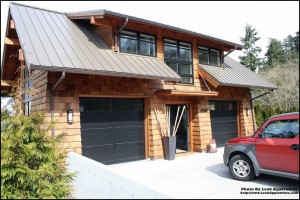Questions to Ask a Seller When Considering an Offer
The process leading up to making an offer on a home can be a daunting. After you’ve found the right home, you will still need to assess various factors that can impact both the details of your offer and the seller’s willingness to work with you. If you are considering making an offer on a home, you may want to start by getting some information about the seller and their history with the home. The first question to consider is: Why are you selling?
In some sense, what you are really asking is: “how motivated are you to sell your home?†Assessing the type of answer you receive to the initial question may help you structure a potential offer. For instance, if the homeowner has already purchased another property or the family is trying to relocate, you might be dealing with a flexible seller. Gaining some insight into the seller’s motivation will help you determine not only how motivated they are to sell but also how they might assess your offer.
Another question that can help you understand how the seller might view your offer is:
How much did you pay for your home?
Though this might seem like privileged information, such statistics are actually public record. Generally speaking, the seller who purchased their home for a low price and built up equity in the property over several years may be more flexible when approached with offers. On the other hand, homeowners who haven’t seen such an increase in their home’s value might be more reluctant to lower their asking price.
After gaining an understanding of how the seller might treat a potential offer, you may want to ask questions about the upkeep of the home and the quality of the surrounding neighborhood. Beginning with the quality of the property itself, you will certainly want to inquire:
What types of repairs have been done recently?
You may want to start by asking the homeowner about your specific concerns. Homeowners will always be happy to tell you about upgrades that have been made to the home, but you may want to pay attention to what isn’t mentioned. It is important to ask because you will be able to tell if a kitchen or bathroom was remodeled after viewing the home or consulting the disclosure document, but you might miss some smaller issues that could impact the details of your offer.
To further protect yourself against surprise renovation costs in a new home, you may want to verify the age and working condition of all major appliances. If possible, check the service records of important appliances (furnaces, water heaters, etc.) as these often serve as markers of a home’s overall upkeep. You can also try securing a monthly estimate of utility costs; these statistics will not only help you estimate future costs but could potentially highlight unhealthy energy consumption within the home’s infrastructure.
Lastly, regarding the surrounding neighborhood, try to open the conversation about the area by asking:
What can you tell me about the neighborhood?
Allow the seller to tell you the good and the bad. By asking the seller for their overall impressions of the neighborhood, you will probably learn things about the area that a more specific question might not have yielded. Follow up the seller’s initial response with questions that are important to you and your family. Based on your needs, you could ask questions like the following: Is there any new construction planned in the neighborhood? What are your thoughts about the nearest schools? Are any businesses or schools scheduled to close? How would you describe the neighbors?
The research you conduct with your agent prior to making an offer is one of the best ways to ensure that your family finds the right home for the right price. As you approach the offer stage, remember that you are not alone and can work closely with your agent to learn as much as possible about the property and the details of the buying process. Furthermore, you shouldn’t be afraid to ask for help if you have questions or concerns about a potential offer. Though the process of making an offer on a property may seem stressful, your diligence will pay off when you finally find a house to call home.
The staff at Coldwell Banker Real Estate LLC writes select articles about important topics related to real estate. For more information about buying a home or selling your current property, visit ColdwellBanker.com today.























